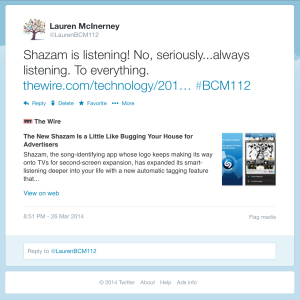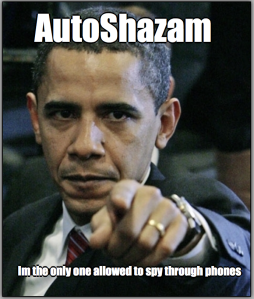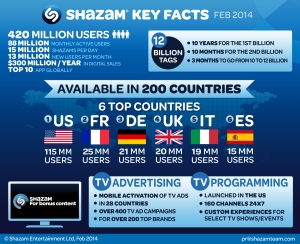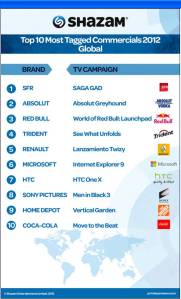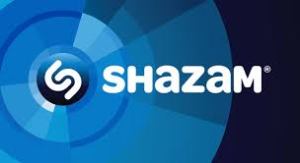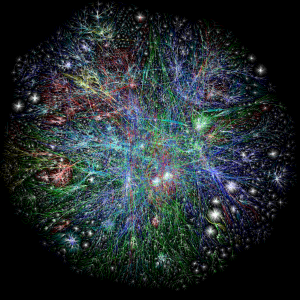In an earlier post I’ve established the intensity and rapidity of Shazam’s popularity, seemingly perpetuated by its dynamic software representing convergence at its finest. Its ‘trending’ nature results from, and is be fuelled by, Jenkins’ 6 Causes for Change and Trend as described in my Prezi.
Of particular interest is number 2 ‘higher concentration of ownership’ in which Jenkins alludes bigger entertainment cooperations such as Disney have the power to undermine and even dismantle smaller competitors. Shazam appears as the stereotypical nerd among the cool kids, riding their coat tails of power but only around as long as it can serve a purpose. Despite having considerably less cooperate power than industries and labels such as Calvin Klein, Shazam has engaged in innovative promotions (the least of which are TV ads) to attain a greater audience and, thus, power through a partnership with the label. The following article demonstrates the consequent concentration of ownership, as the app effectively begins to outlaw the QR Code through its partnership with Calvin Klein.
http://thefutureofads.com/shazam-could-replace-the-qr-code
Further, Jenkins 5 and 6 address the effect that consolidations of platforms on mobile devices will have on the generation of new forms of community. As a result of converged devices such as the smartphone, communities have evolved into prosumers. This awards cooperations and industries less control but an increased rate of consumption. Interestingly, Shazam opposes these ideals. While still encouraging increased consumption rates, Shazam is (for the most part) a locked appliance, wherein there is little room for modification and customisation. Instead, consumers utilise the product in innovative ways (such as the Calvin Klein advertising campaign) in a manner that illicits cooperate control- the company is able to monitor use and engagement whilst boosting their product. Therefore, Shazam still promotes new forms of community by reshaping the world of ‘second screen’ advertising, just not in the way Jenkins anticipated.
Can’t appreciate Jenkins insights? Ladies, (and that-way-inclined gentlemen) for your appreciation, ABS!
REFERENCES:
Cory O’Brien, 2013, Shazam Could Replace the QR Code, The Future of Ads, viewed 27 March 2014, <http://thefutureofads.com/shazam-could-replace-the-qr-code>
Klein, 2013, Calvin Klein Concept 2013 Commercial, online video, 3 February, YouTube, viewed 27 March 2014, <http://www.youtube.com/watch?v=1yelvxwTRUY>

